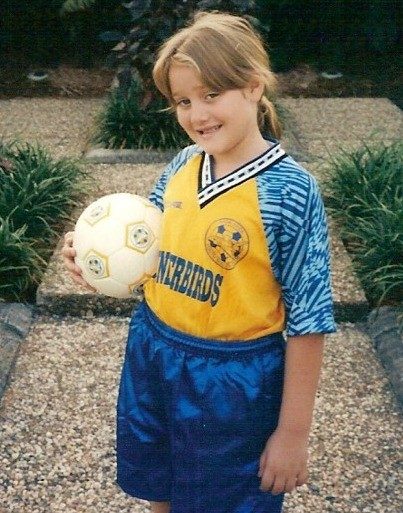How a childhood leukemia and sarcoma diagnosis shaped my career
February 28, 2017
Medically Reviewed | Last reviewed by an MD Anderson Cancer Center medical professional on February 28, 2017
Before I was diagnosed with cancer in June 1998, I wanted to be a princess, a teacher or a veterinarian.
Instead, I became a registered nurse at MD Anderson Children’s Cancer Hospital — the place that saved my life. And it’s all because of the outstanding care I received here as a child.
Dual diagnosis: granulocytic sarcoma and acute myeloid leukemia
My cancer story began the summer after first grade. At the time, my life seemed idyllic: I was learning golf with my dad, earning badges as a Brownie Girl Scout and playing soccer. Little did I know what life had in store for me.
One day I was watching TV with my mom, and I mentioned that I could see two television sets. Concerned, she called over a neighbor who was an optometrist and another who was a nurse. They noticed my left eye was crossed inward and told her to get me to a doctor right away.
After examining me, my ophthalmologist promptly referred us to a neurologist. Later, he told us he could actually see a tumor pressing against my optic nerve, but the scans ordered by the neurologist confirmed it: I had granulocytic sarcoma — a very rare type of tumor — in my head, as well as acute myeloid leukemia (AML).
A unique childhood cancer treatment plan
Granulocytic sarcoma is usually found in the abdominal area of adults after they’ve been diagnosed with acute myelogenous leukemia, so it was unusual for me to have both at age 7 — and for the tumor to be in my brain.
A few days after my diagnosis, I had surgery to remove the tumor at a hospital near Galveston, Texas. The procedure went well, but after three different people told my parents I should see pediatric oncologist David G. Tubergen, M.D. (now retired) at MD Anderson, they decided to bring me here for the rest of my treatment.
Because my diagnosis was so unique, Dr. Tubergen put together a new combination of chemotherapy drugs for me. Some were normally used to treat brain tumors, and some were normally used to treat AML. The first round went fine. But after the second round, I developed a 103-degree fever that kept rising, and I had to be readmitted to the hospital.

Rare procedure deemed only option
Over the next few weeks, my condition worsened. The chemotherapy had damaged my bone marrow, and I had no immune system left. Virtually every organ in my body that could have an infection had one.
The doctors told my parents that the only thing that might save me could also kill me. They wanted to try granulocyte — or white blood cell — transfusions. These had only been done four times before in Houston on pediatric patients, and never at MD Anderson. Only one child had survived.
The decision that saved my life
My parents decided to take a chance. I began receiving the granulocyte transfusions. The side effects were terrible. I spiked fevers of 105 or 106, with stroke-level high blood pressure and terrible chills. But after 21 days, things started looking up. I was discharged at the end of September.
By November, the doctors could no longer detect cancer in my body. Fearing another round would kill me, they decided not to resume chemotherapy. The doctors believed my cancer was gone and would not be coming back.
So far, they’ve been right. This year, I will celebrate 19 years of being cancer-free.
A common bond
Since my diagnosis, helping children with cancer has become my passion.
When I was a patient here, I grew close to my nurses and kept in touch over the years. So after obtaining my bachelor’s degree in nursing, I only applied to one place: MD Anderson Children’s Cancer Hospital.
It’s been an honor and privilege to share this journey with other pediatric cancer patients. In the last three years, they have taught me so much about the beauty of life. I have learned to be thankful for everything I have and to enjoy every single day.
I don’t often share my story with patients. But when I do, they see past the scrubs and realize I know exactly what they’re going through. As I result, I’ve made some really deep, meaningful connections with my patients. And I wouldn’t trade that for the world.
Request an appointment at MD Anderson online or by calling 1-877-632-6789.
I have learned to be thankful for everything I have and to enjoy every single day.
LeighAnna Hutchinson
Survivor & Nurse
